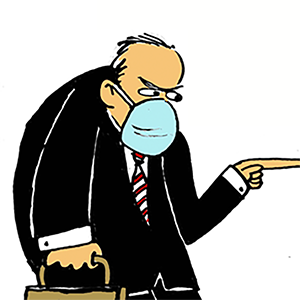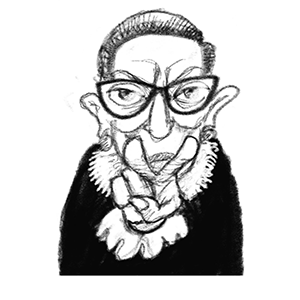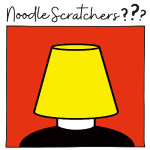Current News
/ArcaMax

New Illinois laws taking effect in 2026 touch on policing, expand abortion access and regulate some AI use
As Illinois turns the calendar to 2026, it will bring more than fresh resolutions. It will also usher in hundreds of new state laws, statutes that will quietly reshape daily life from grocery store checkout lines and police departments to college classrooms, hospital exam rooms and workplaces.
Beginning Jan. 1, roughly 300 new laws will take ...Read more
Skyrocketing Affordable Care Act premiums are pushing some to extreme measures
Mary Jo Armstrong and her ex-husband, William, didn't exactly remarry for love. They remarried for health insurance.
After 18 years of marriage and a divorce, finalized in 2014, the Upper Burrell, Pennsylvania, couple found themselves side-by-side again Dec. 18. Joining them — not in a church or courthouse, but over a Microsoft Teams call —...Read more

Days after Pennsylvania nursing home explosion, residents are left in unfamiliar new locations without clothes, possessions, and medications
First, Danielle Delange saw the news alert: Bristol Health & Rehab, the nursing home where her mother lived, was on fire.
Within minutes, Delange got a phone call from an unfamiliar number. On the line, she heard her 64-year-old mother’s trembling voice.
“My mom said there was a gas explosion,” Delange said. “And I said, ‘How do you ...Read more

A Colorado family is trying to raise millions to test gene therapy that could help kids trapped in bodies they can't move
At first, Everly Green’s parents didn’t understand why her doctors wanted genetic testing. Their daughter was behind on her milestones at 18 months, but was gradually making progress, and they expected that to continue.
Then, when she turned 2, the seizures started. She suddenly began to lose skills. Three months later, Everly needed a ...Read more

Attorneys for Pittsburgh synagogue shooter seek resentencing
Attorneys for condemned Pittsburgh synagogue shooter Robert Bowers have formally filed an appeal to the Third Circuit Court seeking at least a resentencing for their client.
In a 500-page document, they argue, among a dozen other perceived issues, that the court improperly excluded some jurors, improperly included another juror, and improperly ...Read more

One killed, another critically injured after helicopters collide in New Jersey
One person died after two helicopters collided midair Sunday in Atlantic County, New Jersey, according to authorities.
The Enstrom helicopters collided about 11:25 a.m. near Hammonton Municipal Airport, the Federal Aviation Administration said. One helicopter was engulfed in flames near U.S. Routes 30 and 206, the Hammonton police department ...Read more

Southern California's wild weather is not over. Wind gusts of up to 65 mph predicted
Last week's rain won't be the end of Southern California's wild weather as strong wind gusts are forecast through the area until Tuesday.
Gusts of up to 65 mph are expected in mountains and valleys throughout the region, with the National Weather Service warning that power outages were possible and that residents should keep an eye out for ...Read more

Xi's triumphant year staring down Trump belies troubles in China
For President Xi Jinping, what began as a challenging year is ending on a note of triumph.
China was peerless in confronting Donald Trump’s renewed trade war, wielding its dominance over rare earths to extract concessions on tariffs and export controls. Chinese shipments found new homes outside the U.S., pushing its trade surplus beyond $1 ...Read more

Trump praises Zelenskyy after talks that yielded no breakthrough
President Donald Trump said he made “a lot of progress” in talks with Ukrainian President Volodymyr Zelenskyy over a possible peace deal, but that it might take a few weeks to get it done and there’s no set timeline.
The pair met at the U.S. president’s Mar-a-Lago resort Sunday, where they had lunch and later spoke on the phone with a ...Read more

Defiant Assad loyalists attack government forces on Syrian coast
At least three people were killed and 60 injured in Latakia, with Syria’s Interior Ministry blaming the violence along the country’s Mediterranean coastline on the remnants of Bashar Assad’s toppled regime.
The area is home to many of the country’s Muslim Alawite minority, to which Assad belongs. It has been restive since the downfall ...Read more

What new Jan. 1 laws mean for Minnesota workers, immigrants, hunters and more
Minnesota laws and policy changes taking effect Jan. 1 will create new work break requirements, end a long-standing hunting restriction and end state-funded health insurance for adults without legal immigration status.
Perhaps the most impactful change will be the launch of the state’s paid family and medical leave program. Minnesota is the ...Read more

Little-known San Diego financing program has created two dozen apartment complexes across the city
San Diego officials say they’re helping to solve the local housing crisis with a little-known “gap financing” program that has spurred nearly two dozen apartment complexes with more than 2,000 units across the city.
Launched four years ago, the program pools an array of funding sources from city, county, state and federal governments to ...Read more
Girl, 13, missing since October found safe outside D.C., man arrested for kidnapping
A missing 13-year-old girl from Kentucky has been rescued outside Washington, D.C., from a kidnapper after going missing more than two months ago, authorities said Sunday.
Wynter Wagoner disappeared from Orlando, Ky., on Oct. 14. She was found Friday at a home in Silver Spring, Md., police said.
Christian Alexander Delgado, a 37-year-old ...Read more

New law requires public libraries across Illinois to carry opioid OD reversal medication
Rob Simmons estimates that, over the last decade, Oak Park Public Library employees have helped save the lives of about 20 people who overdosed on opioids.
In some cases staff members saw that a patron had potentially overdosed in the library and called 911. In other instances, staffers administered a naloxone nasal spray that can reverse the ...Read more

Kentucky counties along river experience 3.1 magnitude earthquake Sunday
Some Kentuckians felt the shake of an earthquake Sunday along Madison and Garrard County lines, according to the United States Geological Survey.
A 3.1 magnitude earthquake was recorded Sunday afternoon, according to the Louisville National Weather Service.
Around 12:47 p.m., the earthquake struck the Madison and Garrard county lines near the ...Read more

Defiant Assad loyalists attack government forces on Syrian coast
At least three people were killed and 60 injured in Latakia, with Syria’s Interior Ministry blaming the violence along the country’s Mediterranean coastline on the remnants of Bashar Assad’s toppled regime.
The area — home to many of the country’s Muslim Alawite minority, to which Assad belongs — has been restive since the downfall...Read more

Trump meets with Zelenskyy after 'productive' call with Putin
President Donald Trump said he had a “good and very productive” phone call with Russian leader Vladimir Putin just before he began a face-to-face meeting with Ukraine’s president.
Volodymyr Zelenskyy and Trump are meeting Sunday at the U.S. president’s Mar-a-Lago resort in Florida as he pushes for a peace deal in the long-running war. ...Read more

Trump, Zelenskyy to meet as Russia's Lavrov assails Europe
Russian Foreign Minister Sergei Lavrov called Europe “the main obstacle to peace” as U.S. and Ukrainian negotiators prepare for talks on a way to end Moscow’s four-year invasion of its neighbor.
“After the change of administration in the U.S., Europe and the European Union have become the main obstacle to peace,” Lavrov said in an ...Read more
Ukraine says it strikes Rosneft's Syzran oil refinery in Samara
Ukraine said it attacked the Syzran oil refinery in Russia’s southern Samara region overnight for the second time this month, causing a fire at the site.
The extent of the damage is being clarified, Ukraine’s General Staff said in a post on Telegram. Bloomberg cannot independently verify the strike or its outcome.
Ukraine’s forces most...Read more

'Resident Evil' actor indicted on attempted murder, other charges related to alleged N.J. road-rage incident
A New Jersey actor was indicted earlier this month on attempted murder and other charges in connection with accusations he shot a woman in the face following a traffic dispute.
Ernest W. Heinz, 46, of Port Republic, faces 31 charges, including aggravated assault and weapons infractions, stemming from the September incident in Galloway Township,...Read more
Popular Stories
- Incarcerated women often don't have enough period products
- How the CHP is drawing a flood of new recruits when the LAPD, other agencies struggle to hire
- Without pennies, should retailers round up or down? States offer their 2 cents
- 'The honeymoon is over': Inside Wes Moore's rift with Maryland Democrats
- 'Resident Evil' actor indicted on attempted murder, other charges related to alleged N.J. road-rage incident





